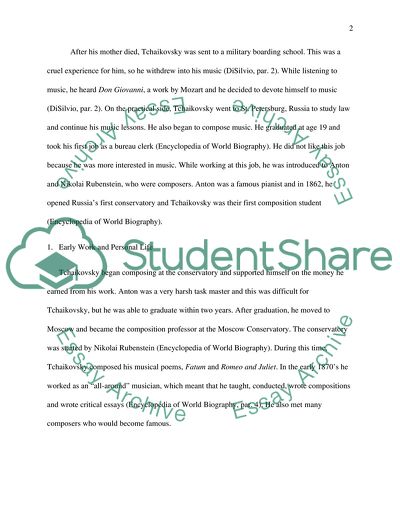Cite this document
(“The creative work of Tchaikovsky. The Swan Lake:History, Term Paper - 1”, n.d.)
The creative work of Tchaikovsky. The Swan Lake:History, Term Paper - 1. Retrieved from https://studentshare.org/music/1603432-the-creative-work-of-tchaikovsky-the-swan-lakehistory-instrumentation-and-roles
The creative work of Tchaikovsky. The Swan Lake:History, Term Paper - 1. Retrieved from https://studentshare.org/music/1603432-the-creative-work-of-tchaikovsky-the-swan-lakehistory-instrumentation-and-roles
(The Creative Work of Tchaikovsky. The Swan Lake:History, Term Paper - 1)
The Creative Work of Tchaikovsky. The Swan Lake:History, Term Paper - 1. https://studentshare.org/music/1603432-the-creative-work-of-tchaikovsky-the-swan-lakehistory-instrumentation-and-roles.
The Creative Work of Tchaikovsky. The Swan Lake:History, Term Paper - 1. https://studentshare.org/music/1603432-the-creative-work-of-tchaikovsky-the-swan-lakehistory-instrumentation-and-roles.
“The Creative Work of Tchaikovsky. The Swan Lake:History, Term Paper - 1”, n.d. https://studentshare.org/music/1603432-the-creative-work-of-tchaikovsky-the-swan-lakehistory-instrumentation-and-roles.


